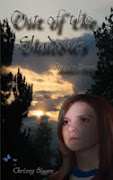

THIS MONTH'S GIVEAWAYS are The Monster that Ate Canberra and The Giving Field. TO BE IN THE DRAW, POST A COMMENT and click follow. For submissions for author interviews to aussiewriters, do likewise.
This is Children’s Book Week in Australia. The winners of this prestigious award have been announced and can be seen here:- Next week we’ll be interviewing one of the place holders, Christina Booth.
This week we have an icon in the children’s book industry in Australia. Creator of the first modern Aussie children’s television character to become a national symbol—Alexander Bunyip—is artist and writer, Michael Salmon. Welcome, Michael…
Your story is inspirational as one of the first Aussie picture book artists to have a television series. Can you tell us how this came about as well as your journey to becoming a picture book author. What dips and glides did you have along the way? Do you write your own text? Tell us about the character Alexander Bunyip.
I started ‘the career’ at 18, the early days (1967/68) of vaguely making a living from drawing cartoons, painting, exhibiting art works. I then joined the famous ‘Tintookies’ Marionette Troupe (part of the Australian Elizabethan Theatre Trust, Sydney: little brother company to the Australian Ballet, Australian Opera) as a trainee stage manager/designer. Loved every moment of this immersion in children’s theatre and decided that entertaining young people was for me!
In 1972 whilst living in Canberra, I decided to self-publish ‘a book’ (no thoughts of offering it to a publisher)—a very amateur, ‘underground’ attempt at a children’s book with very obvious, unsubtle, social comment undertones: The Monster that Ate Canberra. I wrote and illustrated it and had it printed locally, then drove around to all the ACT bookshops and newsagents, offering it for sale (to some very mixed receptions!)
The book featured a large, hungry bunyip named Alexander who was forced to move from his polluted billabong and find a new home. This new home happened to be Lake Burley Griffin. He saw the iconic buildings dotted around the foreshores as objects of food and started eating them— much to the horror of the populace and prime minister!
The book title became an ‘in-joke’ around the nation’s capital. ‘The Monster’ was indeed the Australian Public Service in disguise! The local ABC-TV channel saw potential in the character and forwarded it to Sydney HQ for consideration. The rest ‘is history’.
Alexander Bunyip became an afternoon institution on national television for a decade (1978-88) in various formats. The most successful one being Alexander Bunyip’s Billabong. This featured little Aussie animal puppet characters based on the Golden Press books/Australian Women’s Weekly half page that I was producing at the time. Much merchandising ensued, lots of publicity and exposure.
In 2004 The National Capital Authority produced an official ‘government’ version of the original book for visitors to Canberra (complete with our National Coat of Arms!) and in 2009 a bronze statue of ‘The Bunyip’ was commissioned by the PM’s chief minister & the Federal Minister for Education. It is a work now in progress and will be ‘launched’ in 2011—a tribute to the book’s role in helping one-and-a-half generations of Canberra kids to read. The statue will stand outside the new, ‘state-of-the-art’ public library that is currently being constructed in Gungahlin, ACT.
How important were your live appearances and how important is it to continue to make them?
I’ve been visiting Aussie schools since 1972 (professionally since 1975). These school visits and author signings have become a major part of my business and take up most of each year with lots of travel and laughter, as I present what are basically hourly sessions of quick sketches, stand up comedy and gentle motivation—to fully mixed age groups of primary school audiences
Do you think things like Twitter, Facebook, and YouTube are the most important thing today to gain recognition today?
Well they certainly help— that’s for sure.
They have become an essential part of modern-day communication.
Mind you, I observe (‘out there in IT land’) that sometimes it’s hard to draw the line between what may be considered interesting information and what is wholly, over-the-top, boring, unrealistic self promotion.
Did you have any control over the scripts on the TV show? Did you have to do any screenwriting for it? If not, how was your screenwriter chosen?
I was involved here and there in the program ideas, but was mostly busy doing other things apart from the TV Show (new books, theatre designing etc). The ABC recreated the illustrations from my Bunyip books as the TV set.
Can you give any tips on getting into TV animation today?
It is one of the hardest businesses ‘to crack’ in the Entertainment Industry. ‘Contacts’ are about 95% of the game! But never give up!!
What are the themes running through your work?
Fun, laughter, theatrical … bright, bold illustrations, silly plot situations!
~~~~~~~~~~~~~~~~~~~~~~~~~~~~~~~~~~~~~~~~~~~~~~~~~~~~~~~~~~
Michael Salmon 11/08/2010
http://www.blogger.com/www.michaelsalmon.com.au





